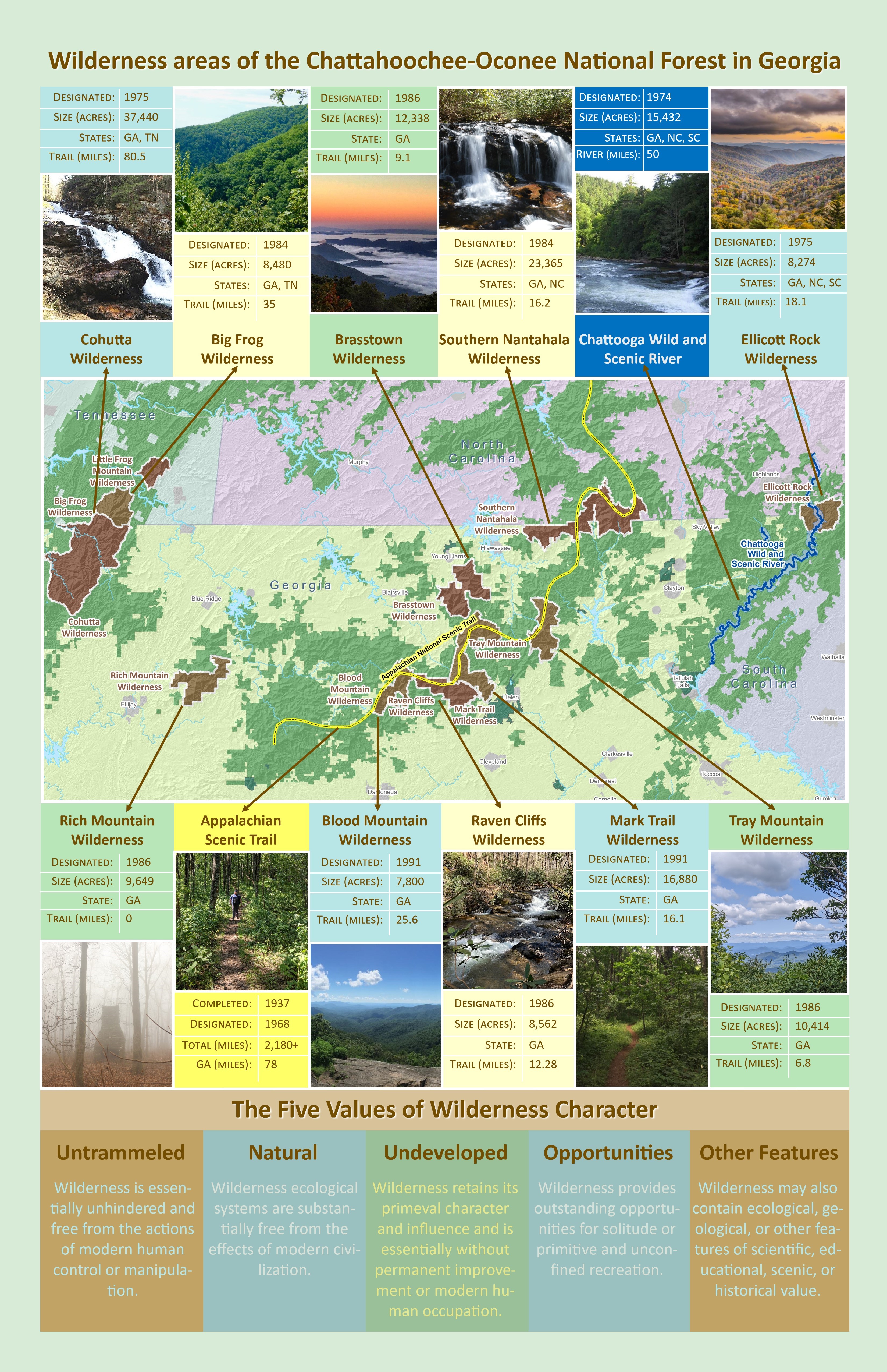About Our Wilderness
Sunlight streams through the tree canopy of the Cohutta Wilderness.
Just as the existence of wilderness has helped shape the character of our nation, it has also shaped our state. Many people aren’t aware of Georgia’s vast wilderness, which includes 14 Wilderness Areas covering more than 486,000 acres. Georgia ranks 15th in the nation for the percentage of land dedicated to wilderness. Along with Florida, Georgia has - by far - the largest amount of wilderness of any state in the southeast.
The Forest Service oversees 10 of Georgia’s amazing Wilderness Areas which together make up 15% of the Chattahoochee National Forest. These places represent some of the most geologically and biologically unique places on our planet. They offer opportunities for primitive and unconfined recreation -- including hiking, horseback riding, fishing, hunting, photography, and off-trail exploration. They give us time to reflect and find solitude and solace to offset the busy world around us. They provide clean water and air, habitat for animals, and healthy landscapes for rare and endangered species to thrive.
Wilderness benefits everyone, whether you visit a wilderness or simply appreciate the continued existence of areas where the Earth and its community of life are not controlled by humans.
The future of wilderness lies in the hands of the citizens that care about them. Groups like the Southern Appalachian Wilderness Stewards program of The Wilderness Society, the Georgia Appalachian Trail Club, and Team Conasauga, among many others not mentioned, are helping us to put “boots on the ground” to help manage wilderness and engage the next generation in wilderness stewardship.
Explore Our Wilderness Areas
 |
| Wilderness areas of the Chattahoochee-Oconee National Forest in Georgia [Click to enlarge] |
There are 10 wilderness areas, all located on the Chattahoochee National Forest, as established by United States Congress. The information below is provided via Wilderness.net, a partnership project of the Wilderness Institute at The University of Montana's College of Forestry and Conservation, the Arthur Carhart National Wilderness Training Center, and the Aldo Leopold Wilderness Research Institute.
- Big Frog Wilderness
- Blood Mountain Wilderness
- Brasstown Wilderness
- Cohutta Wilderness
- Ellicott Rock Wilderness
- Mark Trail Wilderness
- Raven Cliffs Wilderness
- Rich Mountain Wilderness
- Southern Nantahala Wilderness
- Tray Mountain Wilderness
Wilderness Safety
- Are you ready for a wilderness experience? What wilderness really is and what you should expect if you decide to venture into the wilderness.
- Bear-proofing your campsite in the wilderness. The last thing you want to do is unknowingly attract bears into your campsite in the middle of nowhere.
- Leave No Trace. Protect the very qualities that make wilderness what it is. Use these practices to minimize the effects of your presence in the wilderness.
- Due to very heavy use and impacts in the Cohutta Wilderness, changes in the management of camping are necessary. Check with the Conasauga Ranger District Office before planning a camping trip to this area.
-
Chattooga Wild & Scenic River

The Chattooga River begins in mountainous North Carolina as small rivulets, nourished by springs and abundant rainfall, high on the slopes of the Appalachian Mountains—the start of a 50-mile journey that ends at Lake Tugaloo between South Carolina and Georgia, dropping almost ½ mile in elevation.
In 1968, the Wild and Scenic Rivers Act established the National Wild and Scenic River System. In 1974, Congress designated the Chattooga River a wild and scenic river because of its outstanding scenery, recreation, wildlife, geologic, and cultural values. While not the same as wilderness, wild and scenic rivers are carefully managed to protect them.

